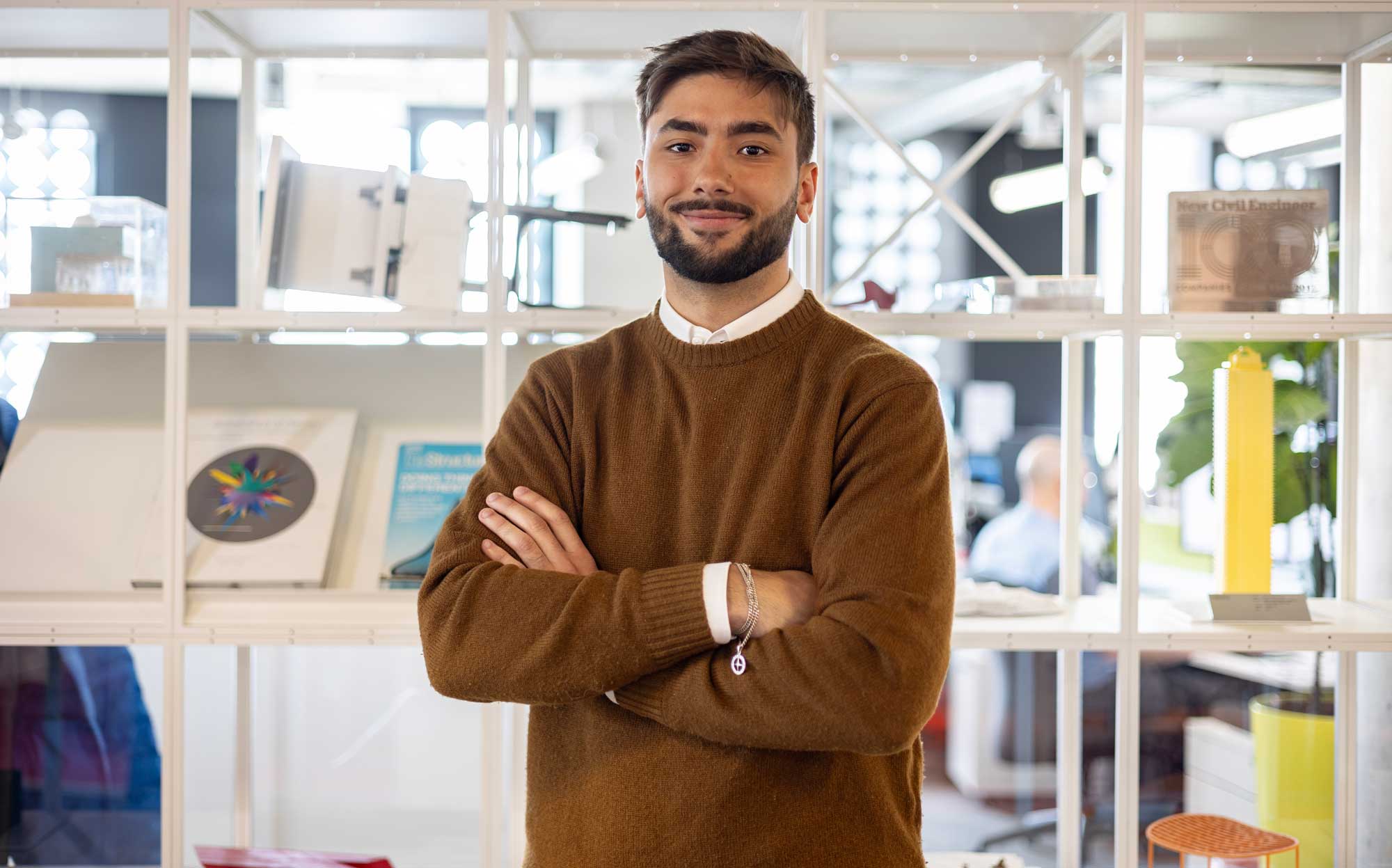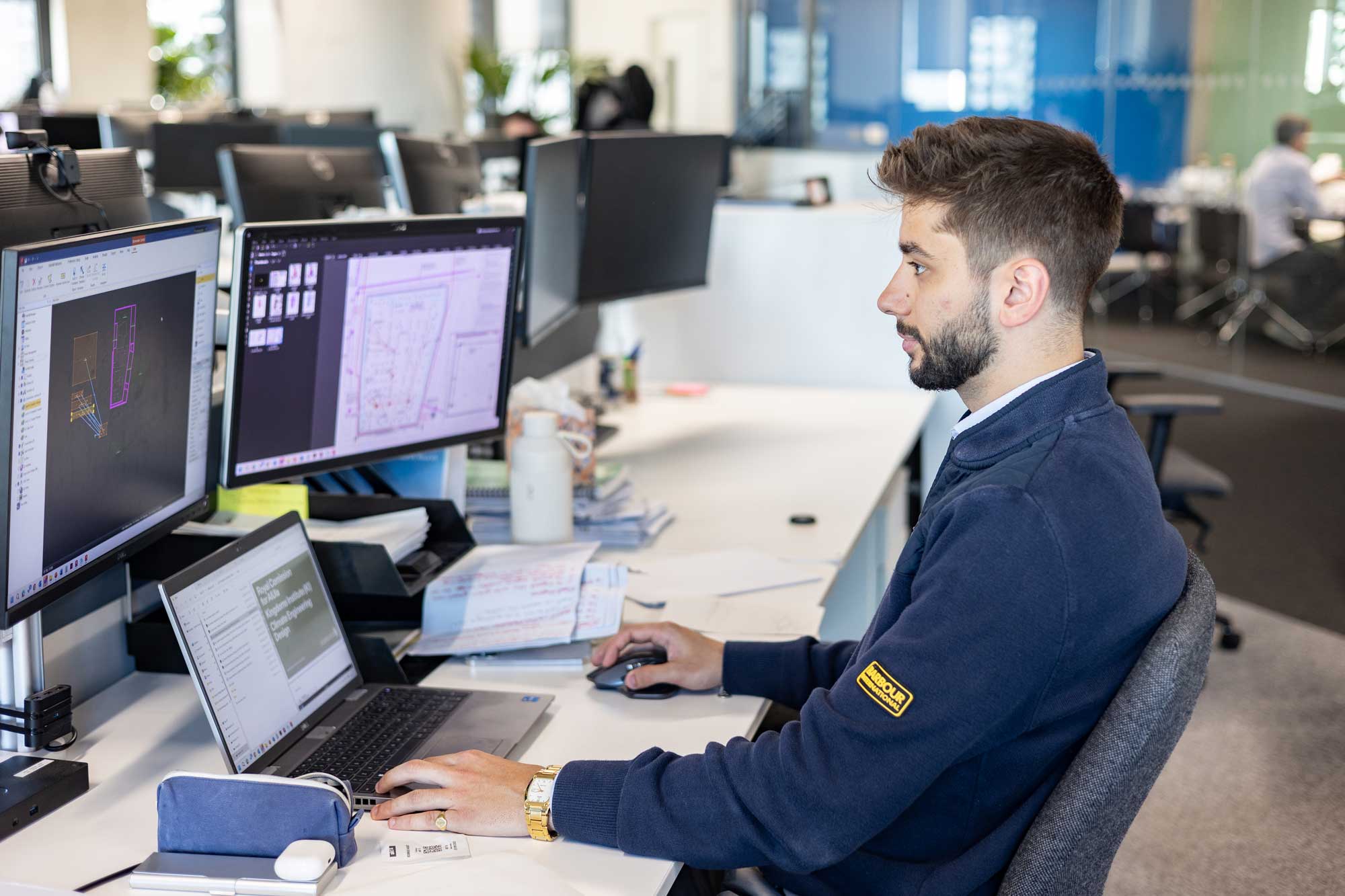Rodrigo joined AKT II four months ago and is already contributing to major masterplans and international projects. He brings a civil engineering perspective to resilience, climate and infrastructure challenges, while embracing collaboration and the studio’s strong social culture.

I’m part of the infrastructure team in London. Right now, I’m working on several early-stage projects: a masterplan in Slough with six mixed-use plots, a framework of schools in Ireland, and a new campus for Imperial College. Internationally, I’m involved in a large masterplan project in Saudi Arabia, which focuses on flood mitigation in a desert context – a fascinating challenge.
They vary widely. The Imperial College project is a single building within a masterplan, so it’s relatively contained. The schools cover a large development area, while the Slough scheme includes around 15 buildings. The Saudi project is the largest, both in footprint and in complexity.
Definitely. Each country has its own standards and policies, which means adapting quickly. Even Ireland, which is close to the UK, has different criteria. Working internationally broadens your perspective and adds complexity, but also makes the work more stimulating.
On the Saudi project, we’re pushing for a more holistic approach to resilience. Instead of addressing only flood risk, we’re also considering drought and storm impacts. It’s been rewarding to propose this broader strategy and see positive uptake from the wider design team.

Internally, I report to project directors and coordinate across teams. Externally, I work with architects, landscape architects and MEP consultants, as well as local authorities, statutory bodies and suppliers. Communication has to be evidence-based and carefully considered, especially with clients and authorities.
From past site experience, I’ve learned that communication needs to be quick and practical. While drawings get updated formally, on-site details are often best shared through sketches or concise emails, always aligned with contractors’ programmes and priorities.
A big part of infrastructure work is cut-and-fill analysis. We assess soil quality from excavations and redistribute it on site wherever possible, minimising waste removal and reducing the carbon footprint. Regardless of geography, balancing cut and fill is the most sustainable outcome.
It comes down to early, proactive communication. On the Saudi project, flood risk could have been seen as a constraint, but by engaging early we turned it into an opportunity for creative architectural solutions. Trade-offs often mean giving detail early, even with assumptions, then refining later.
SuDS are part of our everyday work. Increasingly, they’re designed not just for water storage but also as amenities that enhance landscapes. They can improve water quality, provide biodiversity benefits and add beauty to a site – far more than a purely functional solution.
I’ve learned that day-to-day tasks can connect to long-term aspirations. For me, that’s integrating a holistic climate approach into infrastructure design – thinking beyond typical engineering parameters to include wider climate effects. AKT II has encouraged me to pursue this interest.
Yes – my team director trusted me to lead climate-related investigations, and across the business people are open to new ideas. It’s easy to reach out and start conversations, which fosters a culture where everyone contributes their own innovations.
I keep a daily to-do list. It’s simple but essential for planning ahead. And of course, a morning coffee helps set the day up right.
Yes, regularly. There’s a great mix of internal project highlights and external expert lectures. They’re a valuable way to upskill and share knowledge, and staff are encouraged to suggest new topics.
I play in the weekly football club, which is a great way to meet colleagues from other teams. I also enjoy Tidy Fridays – a monthly social where the whole studio gets together. Both help build stronger connections across the practice.
Favourite tool: Outlook.
Detail you wish more people noticed: Tidiness.
Best graduate tip: You’re only a graduate once.
Studio social you recommend: Tidy Fridays.
First step: sketch model or calculation? Sketch.
Keyboard shortcut you can’t live without: Ctrl+C.
Book/paper/talk that changed how you design: UK Government’s guidance on climate resilience adaptation.
Most useful site photo you’ve taken: A “vertical” pipe that wasn’t vertical.
One file naming rule for everyone: Always include the date.
If you could standardise one thing: Collaborative to-do lists – they make teamwork smoother.